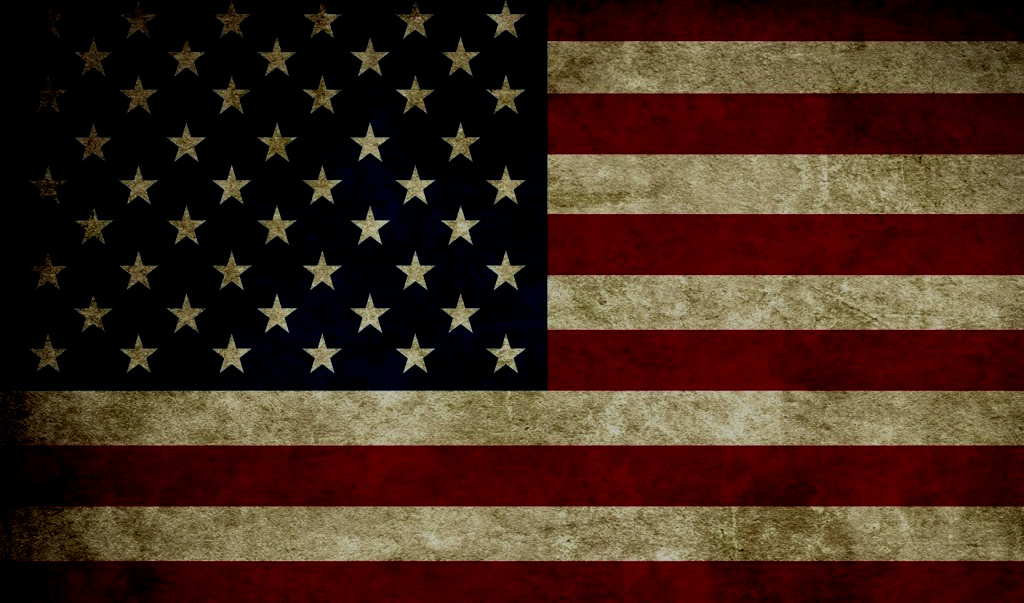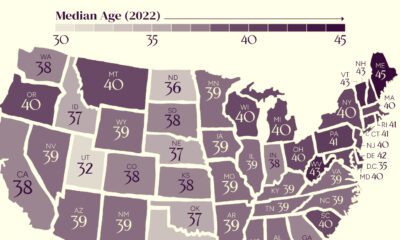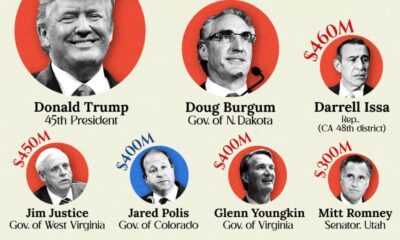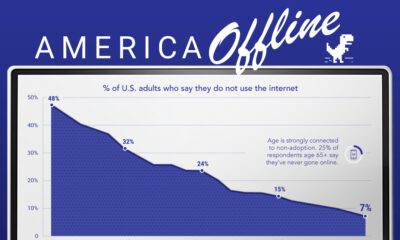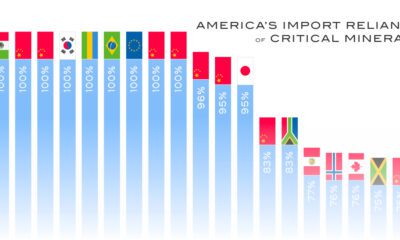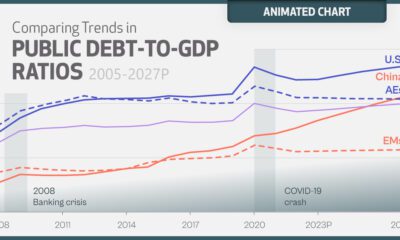Politics
AMERICA VOTES: 10 Key Charts Show What Could Happen Today
Election day is finally here.
Here’s 10 charts and maps that will help prepare your brain for what may come this evening.
1. Media “Consensus” is a Clinton Victory
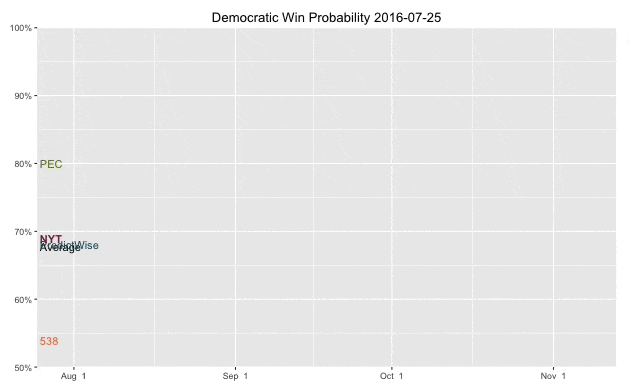
It’s been a roller coaster over recent months, but the media “consensus” view is that Clinton has the best odds at winning the race. The above chart from Josh Katz plots the chance of a Clinton victory over the last three months according to various publications.
2. But Brexit Moments Happen…
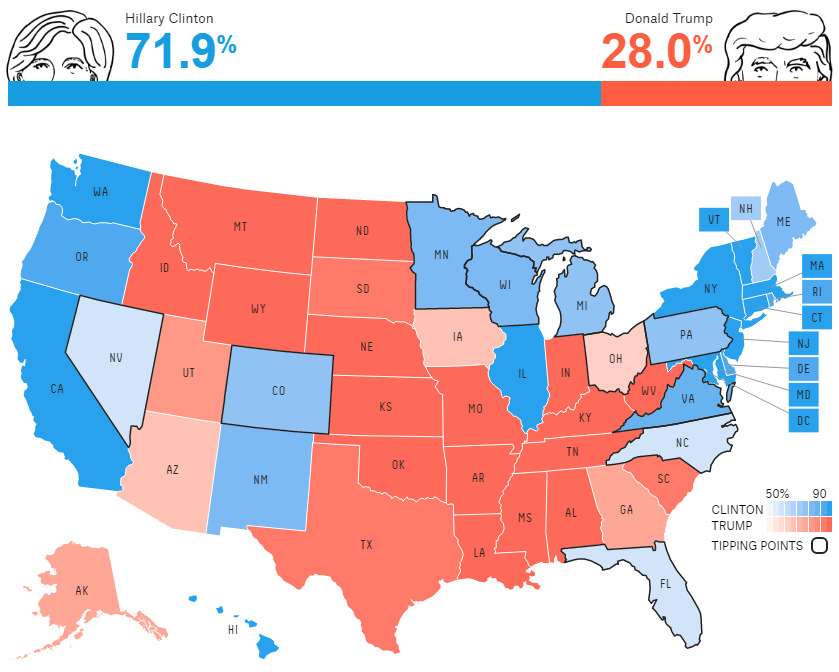

As we all saw in June, polling numbers are not to be trusted.
Even though the consensus view seems to be a Clinton victory, renowned statistician Nate Silver gives us significantly different odds. According to his website, the chance of a Trump victory is at roughly 28% as we head into Election Day.
Silver also recently defended his model on Twitter:
The philosophy behind 538 is: Prove it. Doesn't mean we can't be wrong (we're wrong all the time). But prove it. Don't be lazy.
— Nate Silver (@NateSilver538) November 5, 2016
And especially don't be lazy when your untested assumptions happen to validate your partisan beliefs.
— Nate Silver (@NateSilver538) November 5, 2016
3. The Trump Path to Victory
While a Trump victory is less likely, if it were to happen it may look something like this:
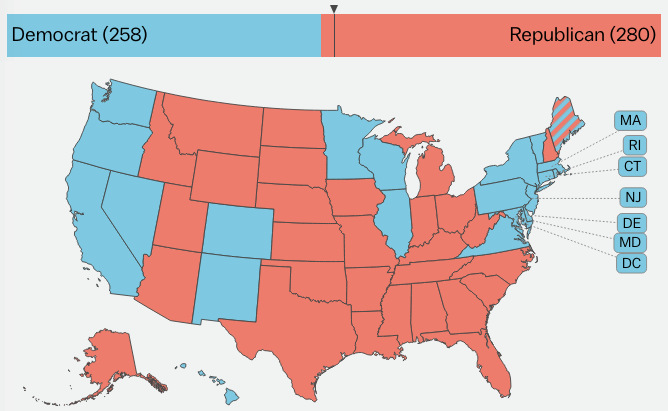
To stand a chance, Trump has to take Iowa, Ohio, Arizona, Florida, and North Carolina. That would get him to 259 electoral votes.
Then he’d need to find 11 votes elsewhere: winning one of Pennsylvania, Michigan, or Virginia would work. However, he has trailed in polls in these three states for months.
4. Demographics are Destiny
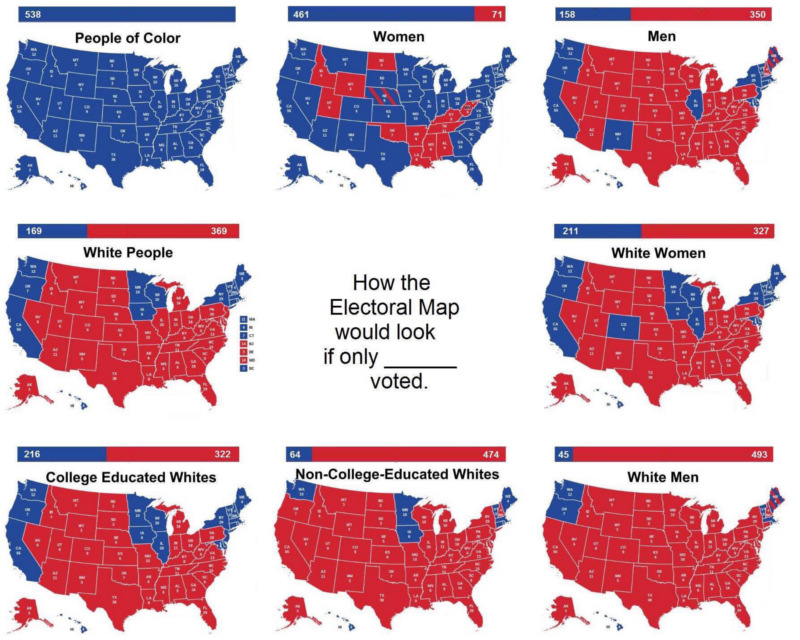
Trump and Clinton appeal to different groups of people.
For Trump to succeed, he will need working class whites to show up in droves at polling stations, and to somehow find cross-over appeal from other voting blocs.
5. Demographics are Destiny – Part Deux
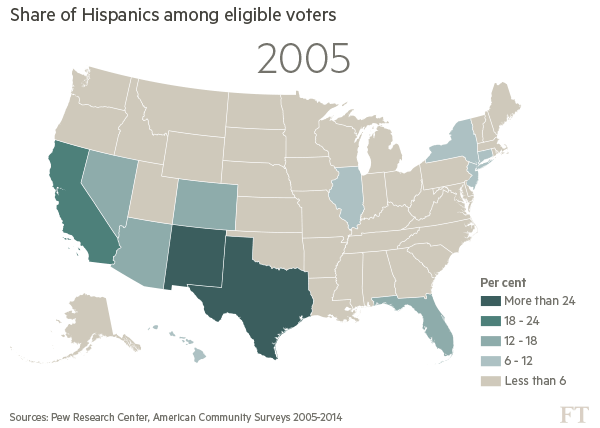
Clinton will also need a strong turnout from the growing share of Hispanic voters in the country. This is especially important in states like Arizona, Florida, and New Mexico.
6. Obama is Hillary’s not-so-secret weapon
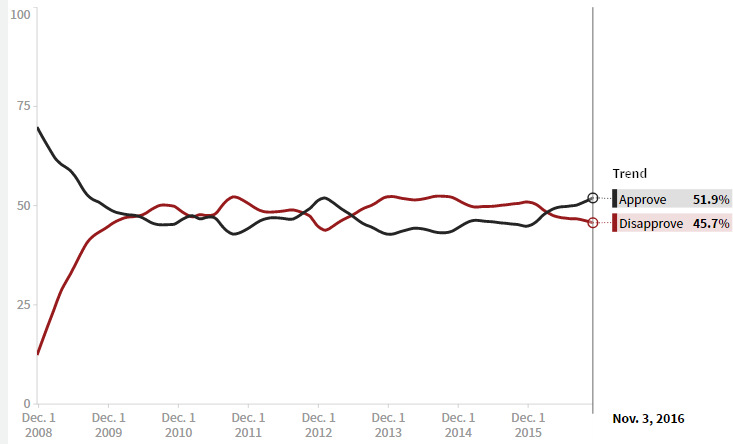
Obama’s approval rating is at its highest point in years, and this could end up being a deciding factor in mobilizing enough voters for Clinton.
7. Will voter turnout improve, generally?
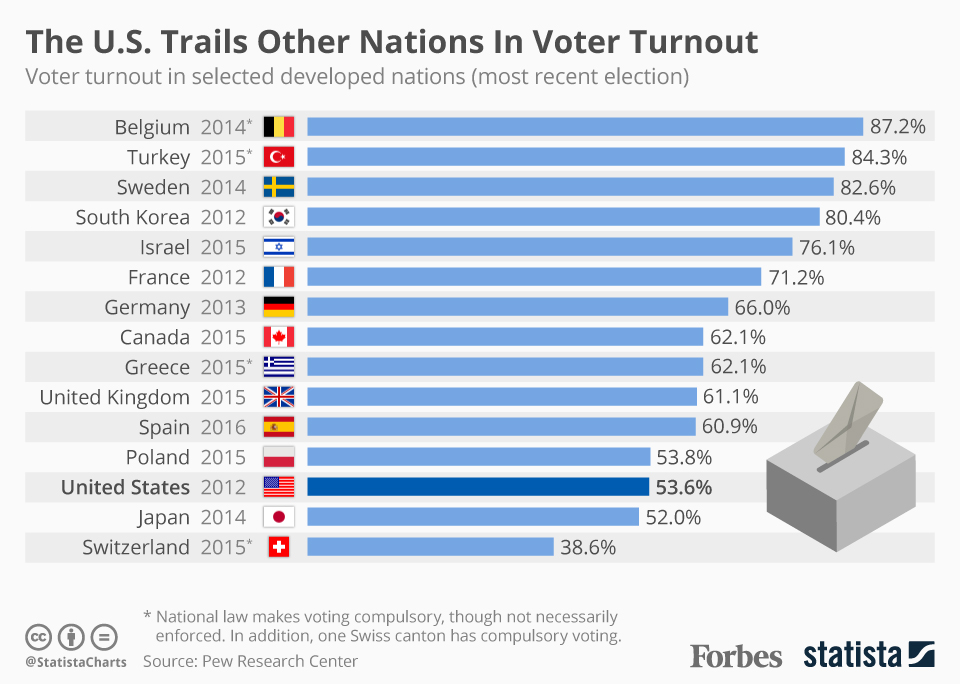
Voter turnout in the 2012 election was low in comparison to other developed countries.
The question is: will it be higher in 2016, and who does this benefit the most?
8. Everyone’s a Hater
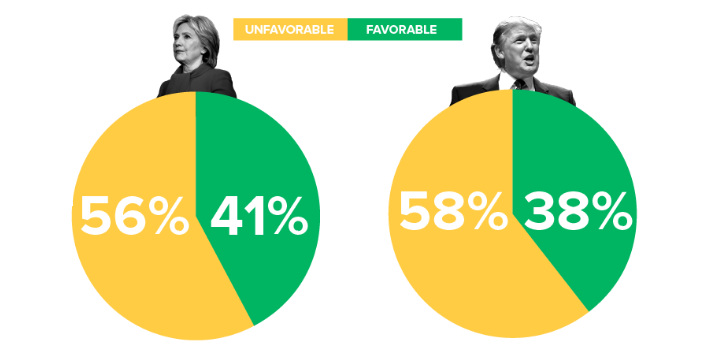
Maybe turnout will be high because of the “lesser evil” vote. After all, these are two of the most disliked candidates in history.
By the way, the above numbers are from summer 2016 – before the “lewd conversation” incident, the additional Trump sexual assault accusations, the release of most of the Podesta emails, and the re-opening (and re-closing) of Clinton’s FBI case.
9. A divided country
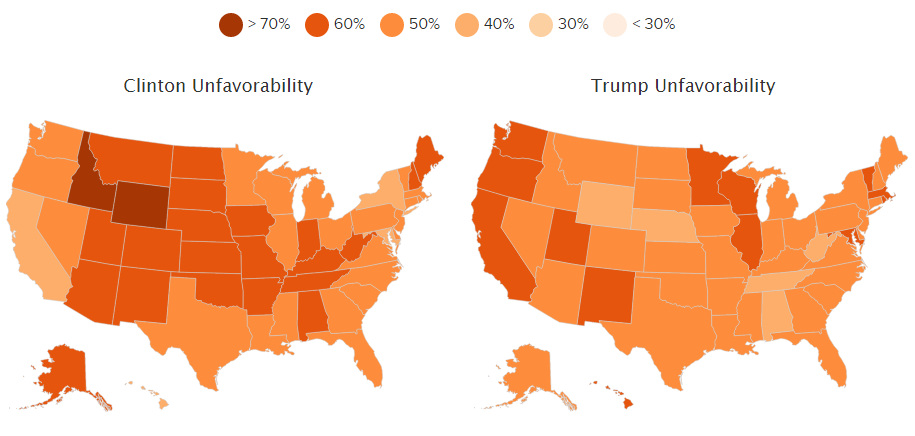
No matter who wins, the country will remain very divided over the near future. There will likely be a significant amount of disgruntled people in practically every state.
10. Money Raised
With the hype around the election, one would guess that the respective campaigns of Clinton and Trump would be destined for the record books.
However, that’s simply not the case:
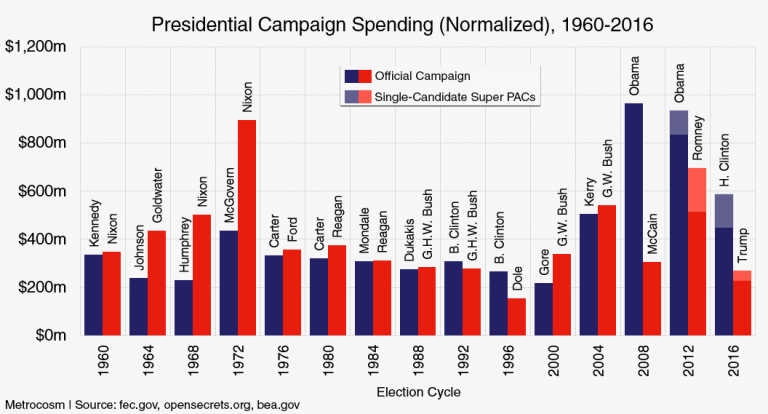
The above chart by Max Galka shows normalized campaign finance history since 1960.
Clinton spent less than Obama did for either of his campaigns, and Trump was outspent by each of the last four Republican campaigns (Romney, McCain, and G.W. Bush 2x).
Economy
The Bloc Effect: International Trade with Geopolitical Allies on the Rise
Rising geopolitical tensions are shaping the future of international trade, but what is the effect on trading among G7 and BRICS countries?

The Bloc Effect: International Trade with Allies on the Rise
International trade has become increasingly fragmented over the last five years as countries have shifted to trading more with their geopolitical allies.
This graphic from The Hinrich Foundation, the first in a three-part series covering the future of trade, provides visual context to the growing divide in trade in G7 and pre-expansion BRICS countries, which are used as proxies for geopolitical blocs.
Trade Shifts in G7 and BRICS Countries
This analysis uses IMF data to examine differences in shares of exports within and between trading blocs from 2018 to 2023. For example, we looked at the percentage of China’s exports with other BRICS members as well as with G7 members to see how these proportions shifted in percentage points (pp) over time.
Countries traded nearly $270 billion more with allies in 2023 compared to 2018. This shift came at the expense of trade with rival blocs, which saw a decline of $314 billion.
Country Change in Exports Within Bloc (pp) Change in Exports With Other Bloc (pp)
🇮🇳 India 0.0 3.9
🇷🇺 Russia 0.7 -3.8
🇮🇹 Italy 0.8 -0.7
🇨🇦 Canada 0.9 -0.7
🇫🇷 France 1.0 -1.1
🇪🇺 EU 1.1 -1.5
🇩🇪 Germany 1.4 -2.1
🇿🇦 South Africa 1.5 1.5
🇺🇸 U.S. 1.6 -0.4
🇯🇵 Japan 2.0 -1.7
🇨🇳 China 2.1 -5.2
🇧🇷 Brazil 3.7 -3.3
🇬🇧 UK 10.2 0.5
All shifts reported are in percentage points. For example, the EU saw its share of exports to G7 countries rise from 74.3% in 2018 to 75.4% in 2023, which equates to a 1.1 percentage point increase.
The UK saw the largest uptick in trading with other countries within the G7 (+10.2 percentage points), namely the EU, as the post-Brexit trade slump to the region recovered.
Meanwhile, the U.S.-China trade dispute caused China’s share of exports to the G7 to fall by 5.2 percentage points from 2018 to 2023, the largest decline in our sample set. In fact, partly as a result of the conflict, the U.S. has by far the highest number of harmful tariffs in place.
The Russia-Ukraine War and ensuing sanctions by the West contributed to Russia’s share of exports to the G7 falling by 3.8 percentage points over the same timeframe.
India, South Africa, and the UK bucked the trend and continued to witness advances in exports with the opposing bloc.
Average Trade Shifts of G7 and BRICS Blocs
Though results varied significantly on a country-by-country basis, the broader trend towards favoring geopolitical allies in international trade is clear.
Bloc Change in Exports Within Bloc (pp) Change in Exports With Other Bloc (pp)
Average 2.1 -1.1
BRICS 1.6 -1.4
G7 incl. EU 2.4 -1.0
Overall, BRICS countries saw a larger shift away from exports with the other bloc, while for G7 countries the shift within their own bloc was more pronounced. This implies that though BRICS countries are trading less with the G7, they are relying more on trade partners outside their bloc to make up for the lost G7 share.
A Global Shift in International Trade and Geopolitical Proximity
The movement towards strengthening trade relations based on geopolitical proximity is a global trend.
The United Nations categorizes countries along a scale of geopolitical proximity based on UN voting records.
According to the organization’s analysis, international trade between geopolitically close countries rose from the first quarter of 2022 (when Russia first invaded Ukraine) to the third quarter of 2023 by over 6%. Conversely, trade with geopolitically distant countries declined.
The second piece in this series will explore China’s gradual move away from using the U.S. dollar in trade settlements.

Visit the Hinrich Foundation to learn more about the future of geopolitical trade

-

 Misc4 hours ago
Misc4 hours agoVisualizing the Most Common Pets in the U.S.
Lions, tigers, and bears, oh my!—these animals do not feature on this list of popular American household pets.
-

 Economy3 days ago
Economy3 days agoEconomic Growth Forecasts for G7 and BRICS Countries in 2024
The IMF has released its economic growth forecasts for 2024. How do the G7 and BRICS countries compare?
-

 United States2 weeks ago
United States2 weeks agoRanked: The Largest U.S. Corporations by Number of Employees
We visualized the top U.S. companies by employees, revealing the massive scale of retailers like Walmart, Target, and Home Depot.
-

 Economy2 weeks ago
Economy2 weeks agoWhere U.S. Inflation Hit the Hardest in March 2024
We visualized product categories that saw the highest % increase in price due to U.S. inflation as of March 2024.
-

 Economy1 month ago
Economy1 month agoG20 Inflation Rates: Feb 2024 vs COVID Peak
We visualize inflation rates across G20 countries as of Feb 2024, in the context of their COVID-19 pandemic peak.
-

 Economy1 month ago
Economy1 month agoMapped: Unemployment Claims by State
This visual heatmap of unemployment claims by state highlights New York, California, and Alaska leading the country by a wide margin.
-

 Science1 week ago
Science1 week agoVisualizing the Average Lifespans of Mammals
-

 Markets2 weeks ago
Markets2 weeks agoThe Top 10 States by Real GDP Growth in 2023
-

 Demographics2 weeks ago
Demographics2 weeks agoThe Smallest Gender Wage Gaps in OECD Countries
-

 Economy2 weeks ago
Economy2 weeks agoWhere U.S. Inflation Hit the Hardest in March 2024
-

 Green2 weeks ago
Green2 weeks agoTop Countries By Forest Growth Since 2001
-

 United States2 weeks ago
United States2 weeks agoRanked: The Largest U.S. Corporations by Number of Employees
-

 Maps2 weeks ago
Maps2 weeks agoThe Largest Earthquakes in the New York Area (1970-2024)
-

 Green2 weeks ago
Green2 weeks agoRanked: The Countries With the Most Air Pollution in 2023

